Stephen White
TabulaTime: A Novel Multimodal Deep Learning Framework for Advancing Acute Coronary Syndrome Prediction through Environmental and Clinical Data Integration
Feb 24, 2025Abstract:Acute Coronary Syndromes (ACS), including ST-segment elevation myocardial infarctions (STEMI) and non-ST-segment elevation myocardial infarctions (NSTEMI), remain a leading cause of mortality worldwide. Traditional cardiovascular risk scores rely primarily on clinical data, often overlooking environmental influences like air pollution that significantly impact heart health. Moreover, integrating complex time-series environmental data with clinical records is challenging. We introduce TabulaTime, a multimodal deep learning framework that enhances ACS risk prediction by combining clinical risk factors with air pollution data. TabulaTime features three key innovations: First, it integrates time-series air pollution data with clinical tabular data to improve prediction accuracy. Second, its PatchRWKV module automatically extracts complex temporal patterns, overcoming limitations of traditional feature engineering while maintaining linear computational complexity. Third, attention mechanisms enhance interpretability by revealing interactions between clinical and environmental factors. Experimental results show that TabulaTime improves prediction accuracy by over 20% compared to conventional models such as CatBoost, Random Forest, and LightGBM, with air pollution data alone contributing over a 10% improvement. Feature importance analysis identifies critical predictors including previous angina, systolic blood pressure, PM10, and NO2. Overall, TabulaTime bridges clinical and environmental insights, supporting personalized prevention strategies and informing public health policies to mitigate ACS risk.
A Gap in Time: The Challenge of Processing Heterogeneous IoT Point Data in Buildings
May 23, 2024Abstract:The growing need for sustainable energy solutions has driven the integration of digitalized buildings into the power grid, utilizing Internet-of-Things technology to optimize building performance and energy efficiency. However, incorporating IoT point data within deep-learning frameworks for energy management presents a complex challenge, predominantly due to the inherent data heterogeneity. This paper comprehensively analyzes the multifaceted heterogeneity present in real-world building IoT data streams. We meticulously dissect the heterogeneity across multiple dimensions, encompassing ontology, etiology, temporal irregularity, spatial diversity, and their combined effects on the IoT point data distribution. In addition, experiments using state-of-the-art forecasting models are conducted to evaluate their impacts on the performance of deep-learning models for forecasting tasks. By charting the diversity along these dimensions, we illustrate the challenges and delineate pathways for future research to leverage this heterogeneity as a resource rather than a roadblock. This exploration sets the stage for advancing the predictive abilities of deep-learning algorithms and catalyzing the evolution of intelligent energy-efficient buildings.
Spectral Subspace Dictionary Learning
Oct 19, 2022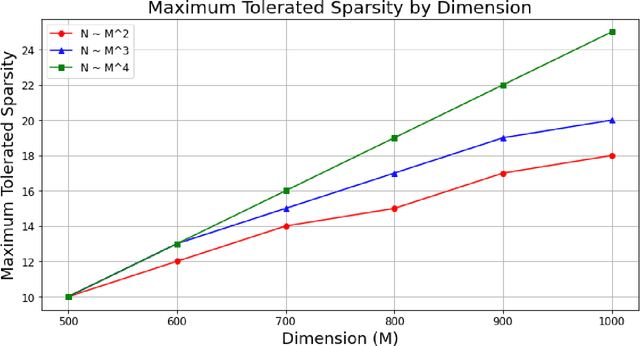
Abstract:\textit{Dictionary learning}, the problem of recovering a sparsely used matrix $\mathbf{D} \in \mathbb{R}^{M \times K}$ and $N$ independent $K \times 1$ $s$-sparse vectors $\mathbf{X} \in \mathbb{R}^{K \times N}$ from samples of the form $\mathbf{Y} = \mathbf{D}\mathbf{X}$, is of increasing importance to applications in signal processing and data science. Early papers on provable dictionary learning identified that one can detect whether two samples $\mathbf{y}_i, \mathbf{y}_j$ share a common dictionary element by testing if their absolute inner product (correlation) exceeds a certain threshold: $|\left\langle \mathbf{y}_i, \mathbf{y}_j \right\rangle| > \tau$. These correlation-based methods work well when sparsity is small, but suffer from declining performance when sparsity grows faster than $\sqrt{M}$; as a result, such methods were abandoned in the search for dictionary learning algorithms when sparsity is nearly linear in $M$. In this paper, we revisit correlation-based dictionary learning. Instead of seeking to recover individual dictionary atoms, we employ a spectral method to recover the subspace spanned by the dictionary atoms in the support of each sample. This approach circumvents the primary challenge encountered by previous correlation methods, namely that when sharing information between two samples it is difficult to tell \textit{which} dictionary element the two samples share. We prove that under a suitable random model the resulting algorithm recovers dictionaries in polynomial time for sparsity linear in $M$ up to log factors. Our results improve on the best known methods by achieving a decaying error bound in dimension $M$; the best previously known results for the overcomplete ($K > M$) setting achieve polynomial time linear regime only for constant error bounds. Numerical simulations confirm our results.
CXR-Net: An Encoder-Decoder-Encoder Multitask Deep Neural Network for Explainable and Accurate Diagnosis of COVID-19 pneumonia with Chest X-ray Images
Oct 20, 2021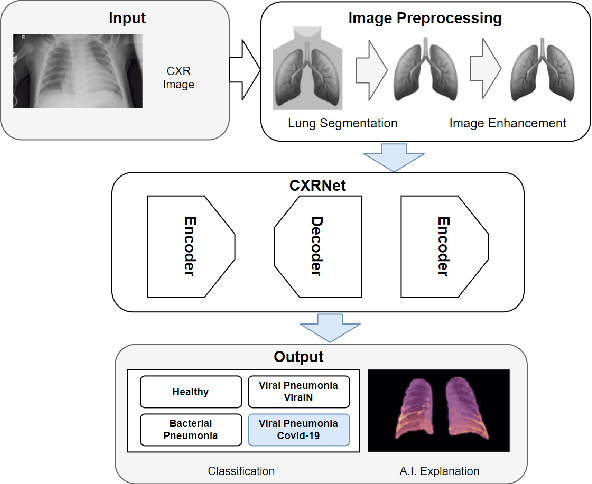
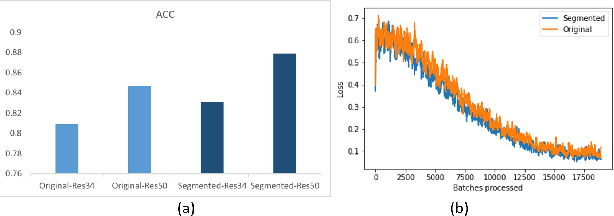
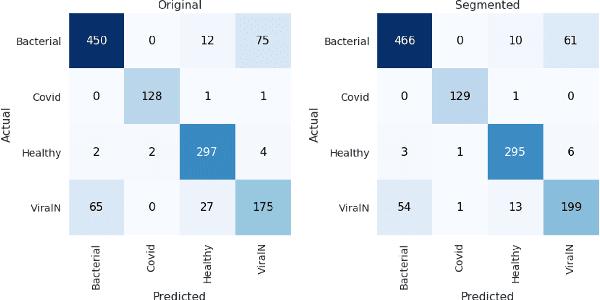
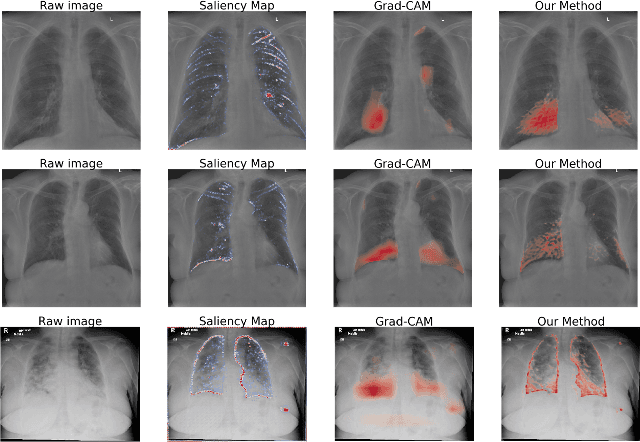
Abstract:Accurate and rapid detection of COVID-19 pneumonia is crucial for optimal patient treatment. Chest X-Ray (CXR) is the first line imaging test for COVID-19 pneumonia diagnosis as it is fast, cheap and easily accessible. Inspired by the success of deep learning (DL) in computer vision, many DL-models have been proposed to detect COVID-19 pneumonia using CXR images. Unfortunately, these deep classifiers lack the transparency in interpreting findings, which may limit their applications in clinical practice. The existing commonly used visual explanation methods are either too noisy or imprecise, with low resolution, and hence are unsuitable for diagnostic purposes. In this work, we propose a novel explainable deep learning framework (CXRNet) for accurate COVID-19 pneumonia detection with an enhanced pixel-level visual explanation from CXR images. The proposed framework is based on a new Encoder-Decoder-Encoder multitask architecture, allowing for both disease classification and visual explanation. The method has been evaluated on real world CXR datasets from both public and private data sources, including: healthy, bacterial pneumonia, viral pneumonia and COVID-19 pneumonia cases The experimental results demonstrate that the proposed method can achieve a satisfactory level of accuracy and provide fine-resolution classification activation maps for visual explanation in lung disease detection. The Average Accuracy, the Precision, Recall and F1-score of COVID-19 pneumonia reached 0.879, 0.985, 0.992 and 0.989, respectively. We have also found that using lung segmented (CXR) images can help improve the performance of the model. The proposed method can provide more detailed high resolution visual explanation for the classification decision, compared to current state-of-the-art visual explanation methods and has a great potential to be used in clinical practice for COVID-19 pneumonia diagnosis.
 Add to Chrome
Add to Chrome Add to Firefox
Add to Firefox Add to Edge
Add to Edge